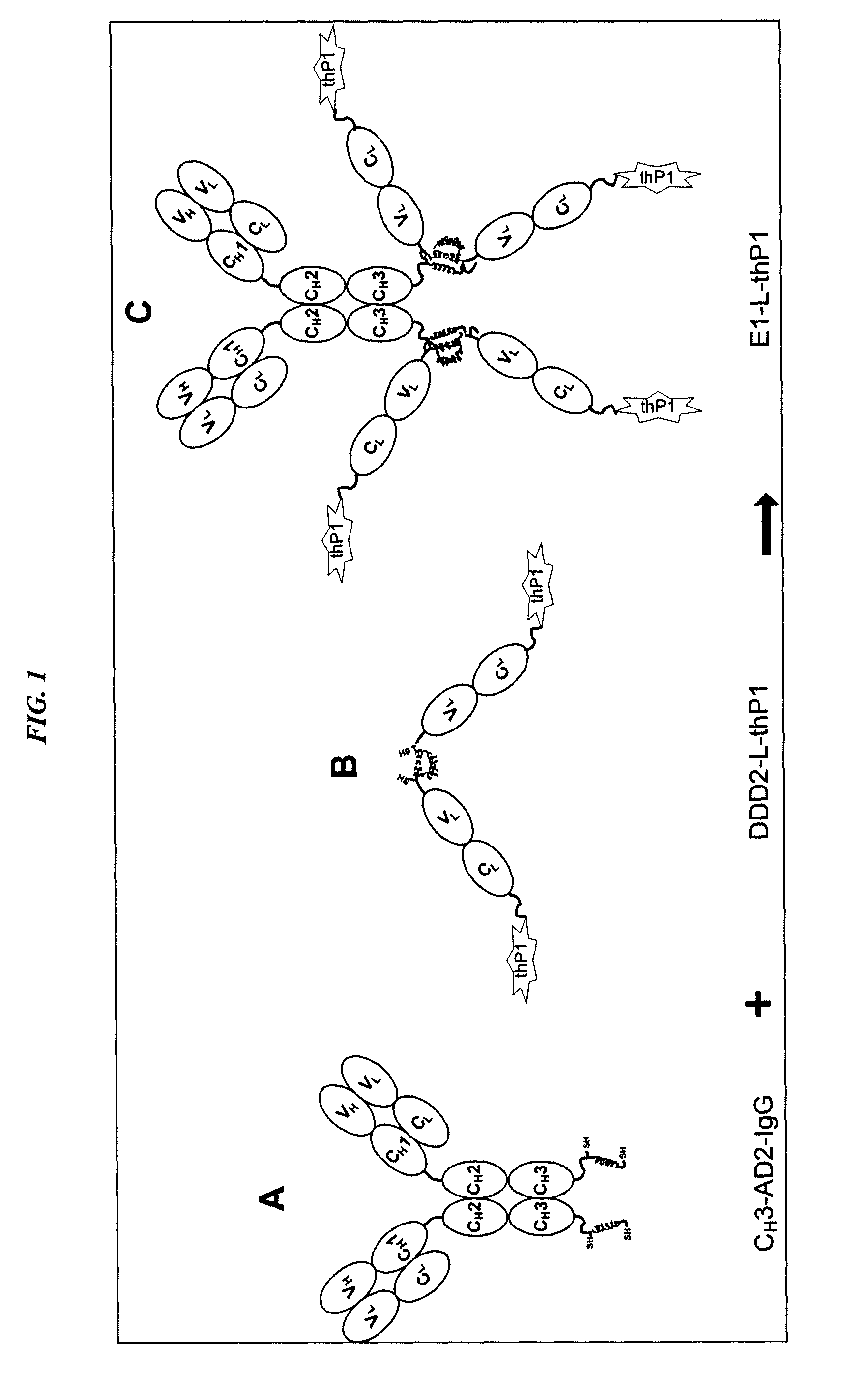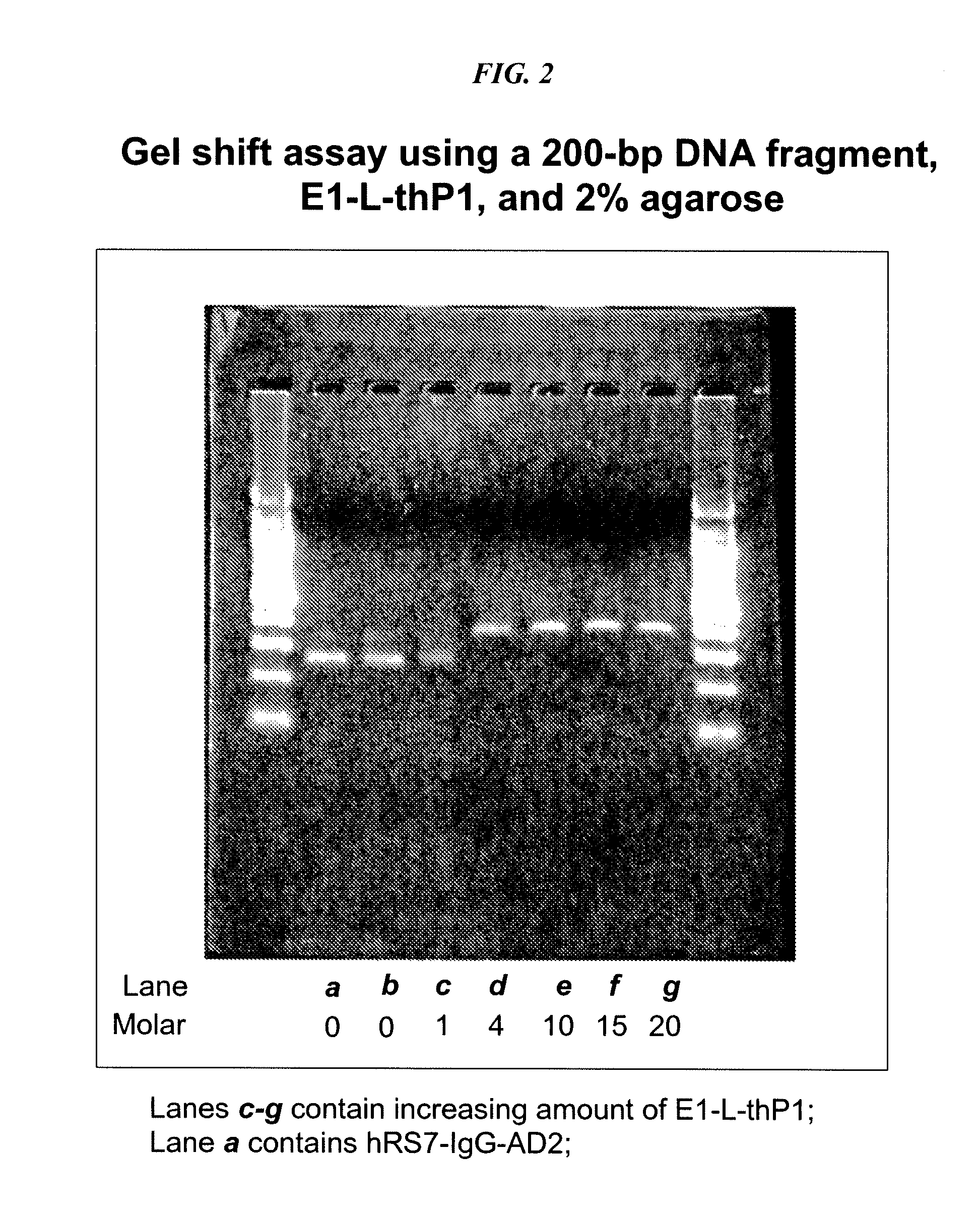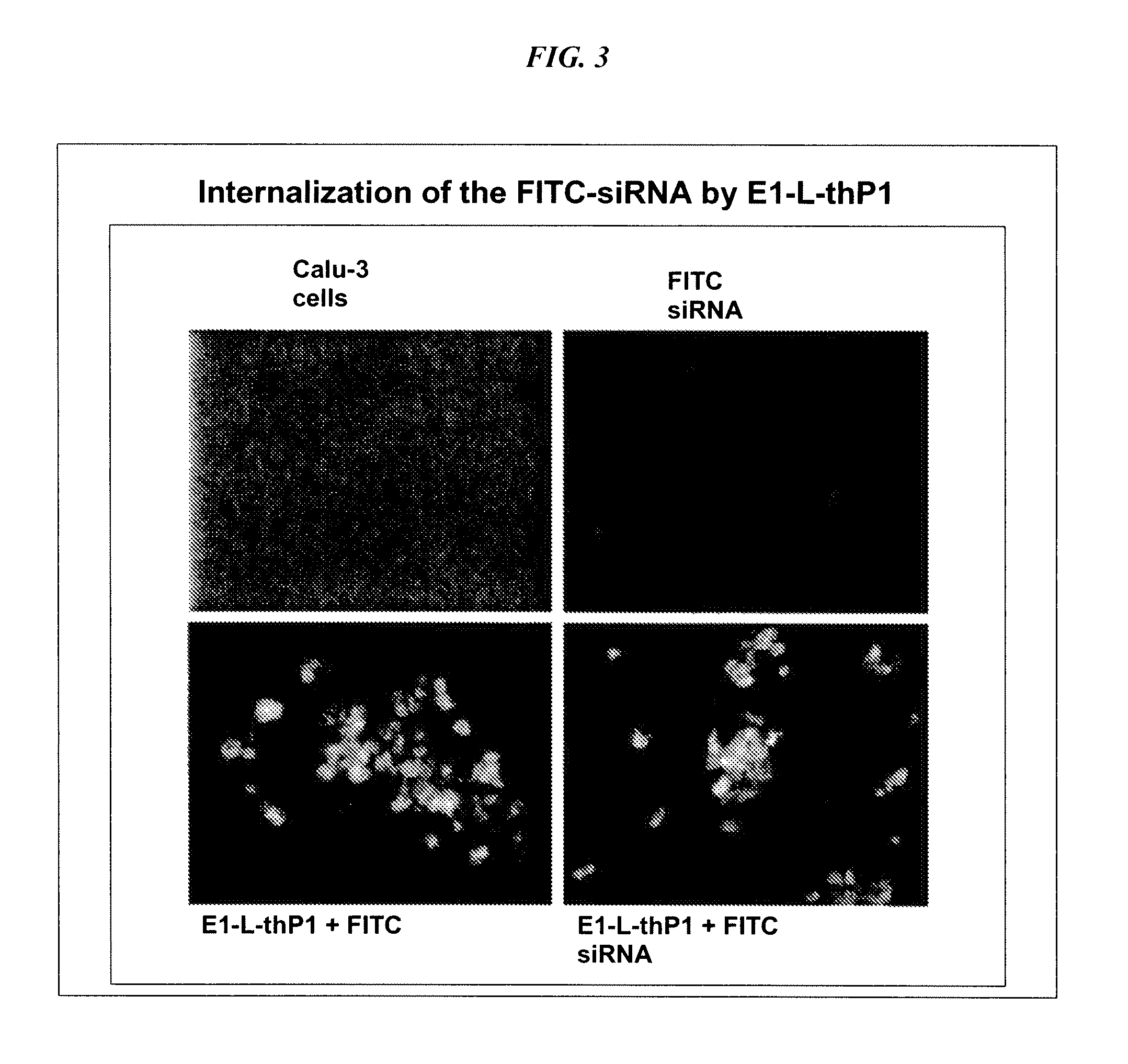Dock-and-lock (DNL) complexes for delivery of interference RNA
a technology of complexes and interference genes, applied in the direction of drug compositions, immunological disorders, peptides, etc., can solve the problems of poor cellular uptake of exogenous sirna and potential off-target effects on other genes, and achieve efficient sirna species delivery, high selective or specific delivery, and facilitate the effect of delivery
- Summary
- Abstract
- Description
- Claims
- Application Information
AI Technical Summary
Benefits of technology
Problems solved by technology
Method used
Image
Examples
example 1
Preparation of Dock-and-Lock (DNL) Constructs
[0128]DDD and AD Fusion Proteins
[0129]The DNL technique can be used to make dimers, trimers, tetramers, hexamers, etc. comprising virtually any antibody, antibody fragment, siRNA carrier or other effector moieties. For certain preferred embodiments, the antibodies and carrier moieties of the subject targeted delivery complex may be produced as fusion proteins comprising either a dimerization and docking domain (DDD) or anchoring domain (AD) sequence. Although in preferred embodiments the DDD and AD moieties may be joined to targeting molecules and siRNA carriers as fusion proteins, the skilled artisan will realize that other methods of conjugation exist, particularly for non-protein siRNA carriers, such as chemical cross-linking, click chemistry reaction, etc.
[0130]The technique is not limiting and any protein or peptide of use may be produced as an AD or DDD fusion protein for incorporation into a DNL construct. Where chemical cross-link...
example 2
Generation of TF1 DNL Construct
[0170]A large scale preparation of a DNL construct, referred to as TF1, was carried out as follows. N-DDD2-Fab-hMN-14 (Protein L-purified) and h679-Fab-AD2 (IMP-291-purified) were first mixed in roughly stoichiometric concentrations in 1 mM EDTA, PBS, pH 7.4. Before the addition of TCEP, SE-HPLC did not show any evidence of a2b formation (not shown). Instead there were peaks representing a4 (7.97 min; 200 kDa), a2 (8.91 min; 100 kDa) and B (10.01 min; 50 kDa). Addition of 5 mM TCEP rapidly resulted in the formation of the a2b complex as demonstrated by a new peak at 8.43 min, consistent with a 150 kDa protein (not shown). Apparently there was excess B in this experiment as a peak attributed to h679-Fab-AD2 (9.72 min) was still evident yet no apparent peak corresponding to either a2 or a4 was observed. After reduction for one hour, the TCEP was removed by overnight dialysis against several changes of PBS. The resulting solution was brought to 10% DMSO a...
example 3
Generation of TF2 DNL Construct
[0175]A trimeric DNL construct designated TF2 was obtained by reacting C-DDD2-Fab-hMN-14 with h679-Fab-AD2. A pilot batch of TF2 was generated with >90% yield as follows. Protein L-purified C-DDD2-Fab-hMN-14 (200 mg) was mixed with h679-Fab-AD2 (60 mg) at a 1.4:1 molar ratio. The total protein concentration was 1.5 mg / ml in PBS containing 1 mM EDTA. Subsequent steps involved TCEP reduction, HIC chromatography, DMSO oxidation, and IMP 291 affinity chromatography. Before the addition of TCEP, SE-HPLC did not show any evidence of a2b formation. Addition of 5 mM TCEP rapidly resulted in the formation of a2b complex consistent with a 157 kDa protein expected for the binary structure. TF2 was purified to near homogeneity by IMP 291 affinity chromatography (not shown). IMP 291 is a synthetic peptide containing the HSG hapten to which the 679 Fab binds (Rossi et al., 2005, Clin Cancer Res 11:7122s-29s). SE-HPLC analysis of the IMP 291 unbound fraction demonstr...
PUM
| Property | Measurement | Unit |
|---|---|---|
| decay energy | aaaaa | aaaaa |
| decay energy | aaaaa | aaaaa |
| decay energy | aaaaa | aaaaa |
Abstract
Description
Claims
Application Information
 Login to View More
Login to View More - R&D
- Intellectual Property
- Life Sciences
- Materials
- Tech Scout
- Unparalleled Data Quality
- Higher Quality Content
- 60% Fewer Hallucinations
Browse by: Latest US Patents, China's latest patents, Technical Efficacy Thesaurus, Application Domain, Technology Topic, Popular Technical Reports.
© 2025 PatSnap. All rights reserved.Legal|Privacy policy|Modern Slavery Act Transparency Statement|Sitemap|About US| Contact US: help@patsnap.com



